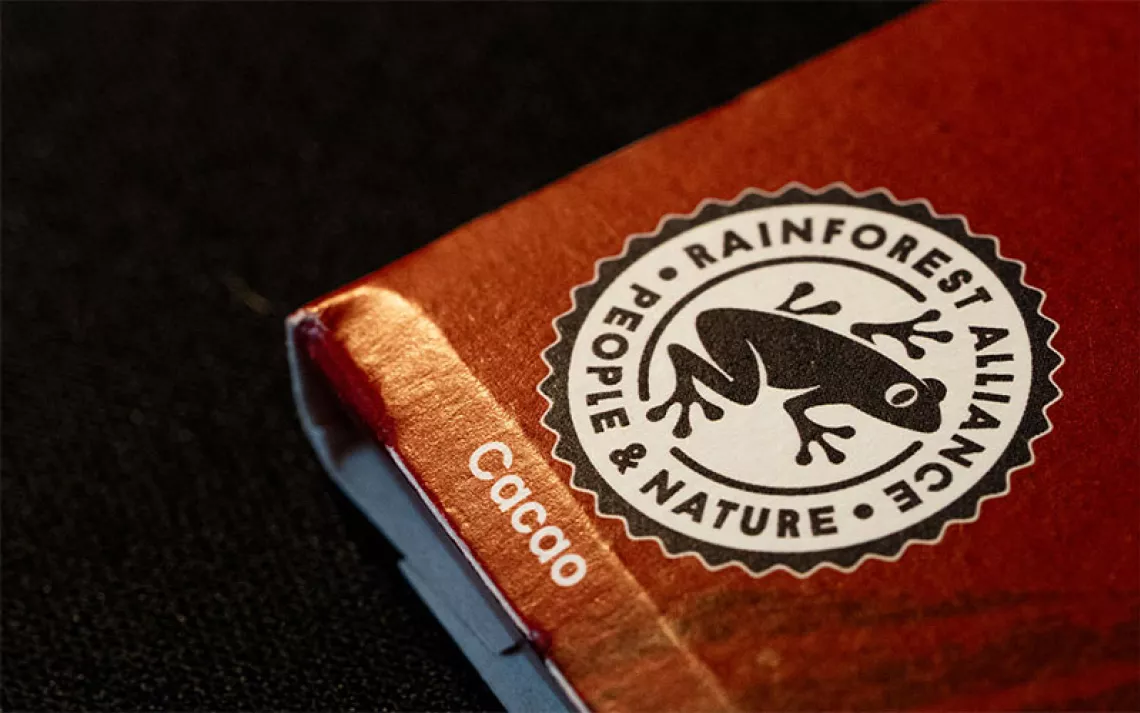Buffalo River Hog CAFO Threatens America’s First National River
C&H Hog Farms produces millions of gallons of animal waste in “Jewel of Arkansas”

C&H Hog Farms | Photo courtesy of the Buffalo River Watershed Alliance
Arkansas is often referred to as flyover country, seen only in passing from behind the double-pane glass of an airplane window. What people are flying over happens to be the home of one of the most iconic watersheds in the United States—an area of rolling bluffs and streams so lush and pristine that in 1972 a Republican president, Richard Nixon, designated Arkansas’s Buffalo River the first national river in the United States. This coming March 1, it will be 45 years to the day since Nixon put the river under the protection of the National Park Service.
According to the law Nixon signed, the designation of the Buffalo National River was “for the purposes of conserving and interpreting an area containing unique scenic and scientific features, and preserving as a free-flowing stream an important segment of the Buffalo River in Arkansas for the benefit and enjoyment of present and future generations.”
Now, a “future generation” of Arkansas residents who inherited the first national river fear that an industrial-scale Concentrated Animal Feeding Operation, or CAFO, threatens the sensitive ecology they call home. C&H Hog Farms, originally under contract with Cargill until the Brazilian meat processor JBS purchased Cargill’s pork division in 2015, dumps millions of gallons of hog urine and feces each year into giant waste lagoons, or ponds, just a few miles from the Buffalo River. That waste is then sprayed onto fields that are on the hillside or adjacent to Big Creek, a major tributary flowing into the Buffalo. C&H is the only CAFO operation of its size in the Buffalo River watershed and, according to concerned residents, it should never have been allowed there in the first place.
The Buffalo National River stretches across some 135 miles, from the Ozark Mountains to the White River, in a weave of interlacing channels—with free-flowing mountain water and waterfalls, limestone bluffs, and a sprawling labyrinth of more than 300 caves. It is home to a rich array of aquatic and other plant and animal life, such as rare freshwater mussels, in addition to three federally endangered bat species. It is one of the last undammed rivers in the United States.
The river is also a major economic driver for the state. According to a National Park Service report, the 1,463,304 visitors who came to the Buffalo National River in 2015 spent $62,243,200 in communities near the park, supporting 969 local jobs.
C&H is a privately owned CAFO industrial swine farm in Big Creek, near Mount Judea in Newton County, which maintains approximately 6,000 hogs in large barns. It is co-owned by Richard and Phillip Campbell and their cousin Jason Henson (the "C" and "H," respectively) and operates under contract with JBS, which supplies the hogs. The facility, via its application, is permitted to store around 2.3 million gallons of feces and urine in two large waste ponds per a 180-day cycle. As with most CAFO operations, there is no sewage treatment for the waste beyond a process for distributing it on land via nearby application fields—a practice that often contaminates groundwater and poses serious risks to public health (see "The CAFO Industry's Devastating Impact on the Environment and Public Health" from the March/April 2017 issue of Sierra and accompanying video). The estimated amount of total manure C&H applied to its fields in a given year, some 498 acres of grassland, was just over 2.5 million gallons, according to its own annual report for 2016. C&H was built just six miles from where Big Creek hooks up with the Buffalo River, and less than a mile from Mount Judea School—one of the poorest K-12 schools in the state. Several of the application fields are within a few hundred feet of the school’s playground.
The siting of such an operation so close to the Buffalo River and a public school, and the surreptitious way in which it was permitted into existence, are now the contention points between the family of farmers who own C&H and those who believe it is a threat to the river’s ecology and their very way of life.
Gordon Watkins is the president of the Buffalo River Watershed Alliance, an all-volunteer nonprofit group of local stakeholders that was formed in response to C&H Farms. “It’s just a totally unacceptable risk,” he says. “There are so many other options that could’ve been taken, such as locating this particular business elsewhere where it would be less impactful, especially to the Buffalo.”
Watkins came to the Ozarks in 1973 as part of the back-to-the-land movement, just after the Buffalo was designated a national river. He is owner of Rivendell Gardens, which for over 40 years has grown vegetables and berries in addition to cows, pigs, and turkeys. Currently the farm mostly produces hay and blueberries, while operating a local cabin rental business. “I’m invested both as a longtime resident, one who loves the Buffalo River, and one who depends on the Buffalo River to generate a large part of my income for my cabin business,” Watkins says. “For the state to have allowed this to happen is a travesty.”
“It took us totally by surprise that anybody would ever put a hog CAFO farm near the Buffalo River,” says Dr. David Peterson, president of the Ozark Society. The Ozark Society was founded in 1962 to conserve the Buffalo River and played an instrumental role in keeping it from being dammed. It has been involved in a variety of conservation and outdoors initiatives since then. Now it has joined a coalition of groups to oppose C&H. “It was done sneakily,” Peterson says, referring to the siting. “There were a lot of protocols that weren’t followed.”

Entrance to C&H Hog Farms | Photo by Carol Bitting
The Arkansas Department of Environmental Quality (ADEQ) granted C&H a Regulation 6 general permit in August 2012, and construction of the facility got underway. Few knew about what was happening until December 2012, when the Park Service found out and began notifying the public. There was almost no public notice about the C&H application for the permit, and ultimately no public comments provided, which is highly unusual—for a project like this, there are normally hundreds of comments from the public. In this case there were none, because no one knew about it.
A Regulation 6 permit had never been granted to a large swine operation until C&H applied for one, and no other operation has received one since. All hog CAFO permits in Arkansas require local notice: neighboring landowners must be notified, and announcements have to be posted online and in the local paper. But the Regulation 6 permit for which C&H applied lacked the standard notification requirement. The only information publically available about the C&H application was a brief notice buried in the ADEQ website, discoverable only if someone knew about the application in the first place.
Such an abject lack of transparency over something as monumental as putting millions of gallons of hog waste into a national river watershed has left local residents baffled, and outraged.
“If we had the opportunity to give public comments when that initial C&H permit was up for review in 2012, I’m confident that it would’ve been denied,” Watkins says. “But we didn’t have that opportunity. So now, it has been an uphill battle to make any progress with correcting the problem.”
Also, the Regulation 6 permit allowed the farm to come into operation with no site-specific conditions. Little was done to take into account the specific geology on which the operation would be located. The original application for the permit made no reference to the Buffalo River. It did mention the CAFO would be built on Big Creek, but identified it as being on the White River watershed, not the Buffalo River watershed—a significant omission. Just as significant, the application didn’t mention that the geology of the area is made of karst—a porous form of limestone and other soluble rocks particularly susceptible to groundwater contamination. The Buffalo watershed has a lot of sinkholes and caves; when it rains, everything flushes right down into the river.
Dye-tracing studies were conducted around C&H to investigate where waste might flow if the waste ponds leaked. During the tests, dyed water injected into wells appeared not only in Big Creek, but on the other side of the Buffalo River, flowing into sinkholes and laterally below the river. It also flowed upstream into another Buffalo River tributary miles away. One of the dye traces went under a ridge and came up into the next watershed.
An assessment group called the Big Creek Research and Extension Team has released a series of quarterly reports showing consistently elevated levels of total nitrogen in the water—in some cases more than 150 percent—although the group makes no determination on whether those higher levels are the result of leakage from the C&H waste ponds or other sources. Hog manure contains high levels of nitrates and phosphorous, which can cause toxic algae blooms and massive fish kills.
Bob Allen is a retired organic and environmental chemistry professor and the conservation chair of the Arkansas Canoe Club. “It’s not a matter of if there’s going to be ground contamination; it’s a matter of how much and when,” he says. “You cannot apply millions of gallons of hog feces and urine to a field that drains into the Buffalo River without some of it getting there. That’s pretty much a no-brainer in my mind.”
The Buffalo River Watershed Alliance pressured ADEQ to test if there was leakage under the C&H waste ponds. ADEQ hired an independent company to conduct the test, but only allowed for a single hole to be drilled, and the test was inconclusive. U.S. EPA guidelines for investigating karst indicate that seven holes per acre should be drilled for such a test to be effective.
There is also the issue of overflowing. The design specifications for the waste ponds are that they must have a sufficient freeboard to guard against overflowing in a 25-year rain event. But if six or eight inches falls in 24 hours, which is not unlikely, the ponds could fill up and overflow the dirt banks. If that happens they will fail catastrophically and wash out. C&H has two waste ponds: Pond 1 is designed to overflow into Pond 2, but there is no concrete spillway should Pond 2 overflow. If Pond 2 had a catastrophic failure, it would dump millions of gallons of toxic manure into the Big Creek tributary leading into the Buffalo.
“We know that if any of these ponds leak, that potentially the bacteria and the phosphorous and the other wastewater can literally go down under the river and come up in another tributary,” says Carolyn Shearman, a member of the Sierra Club Central Arkansas Group executive committee. “This land is like Swiss cheese. We’re trying to be as protective as we can, monitoring phosphorous, sedimentation, and dissolved oxygen levels. If those oxygen levels sink to a certain point, the river will essentially be dead.”
The Buffalo River Watershed Alliance, the Ozark Society, the Arkansas Canoe Club, and the National Parks Conservation Association joined together with Earthjustice in a lawsuit in 2013 claiming the USDA-Farm Services Agency and the Small Business Administration conducted an improper environmental assessment of C&H Hog Farms when they guaranteed its loans. In 2014, U.S. District Judge for the Eastern District of Arkansas, D. Price Marshall, agreed, finding that the loans were arbitrarily given without properly assessing the environmental impacts. An appeal was upheld, however, and the loan guarantees, which were on hold during the appeal, were allowed to stand.
In the wake of public outrage, in addition to thousands of state dollars spent researching the situation, former Democratic governor of Arkansas Mike Beebe implemented a moratorium in 2015 on the construction of any new medium or large swine CAFO farms on the Buffalo National River watershed for the next five years. In September 2016, Republican governor Asa Hutchinson called for the Beautiful Buffalo River Initiative, featuring the Beautiful Buffalo River Action Committee, which includes officials from five groups including ADEQ, the Arkansas Heritage Commission, the Department of Agriculture, and others to make further recommendations. There is also a subgroup that has been formed to submit a watershed management plan. The stakeholders in the plan include the Ozark Society and the Sierra Club, among others.
Meanwhile, C&H continues to operate as the only permitted industrial hog farm in the Buffalo River watershed. In June 2016, the farm applied to ADEQ for a Regulation 5 permit in order to keep operating, as their original Regulation 6 permit expired. C&H’s application was tentatively approved this past February 17, which activates a 30-day public comment period. Conservation and civic groups are weighing their next move.
“The only victory we really have had is when the state legislature approved the moratorium on any other CAFOs in the watershed,” says David Peterson. “But it was by one vote. So in some sense, we’re hanging on by our fingernails.”
Carol Bitting is a biological technician who lives in the watershed with her husband, an employee of the National Park Service. She grew up in Arkansas; one of her first memories was swimming in the Buffalo. She’s also an avid caver who has caved the whole area. The couple lives within a mile of the Buffalo River and eight miles from C&H; they can smell the stench of the manure from their home.
Bitting has been working with biologists in Oklahoma on testing water samples and working with local advocacy groups. “When C&H Hog Farms went into business, Big Creek was pretty much at its maximum limit of nutrients according to the water samples the National Park Service had pulled,” she says. “There were no stream assessments done at all. It was very poorly done.”

Algae on the Buffalo River | Photo by Carol Bitting
Bitting has taken scientists and university students on field visits to collect data and other samples, and is friends with others who work at the National Park Service, and at ADEQ. “It was devastating,” she says about when she first learned that the state had permitted a hog CAFO near the Buffalo River. “To me and a lot of people, we couldn’t even talk about it for a long time, because it just crushes your chest.”
Now, C&H is looking to transport its waste to another location known as EC Farms, which is a former swine operation that closed its doors and is currently just a series of application fields owned by a cousin of the Campbell brothers. EC Farms has requested a permit modification that would allow it to accept waste from C&H under a land application permit only. If it’s allowed to go through, C&H would have the ability to spread millions of gallons of waste into multiple watersheds, including Big Creek, the Little Buffalo, the Left Fork, and Hurricane Creek.
“The reason they are doing this, we think,” Gordon Watkins says, "is because they have saturated their existing fields to the point where they won’t be able to use them anymore.”
The distance between the waste application fields permitted to EC Farms and those permitted to C&H Farms is about 20 miles, which means C&H could possibly be trucking thousands of gallons of manure and wastewater up and down the highway, all over the most scenic part of the county, also known as the Arkansas Grand Canyon.
Since JBS completed its purchase of the Cargill pork division over a year ago and began its contractual relationship with C&H Hog Farms, there has been no effort to reach out to the local stakeholders here to address their concerns. When C&H was still under contract with Cargill, the company did send representatives for several such meetings. But ultimately, nothing was done.
Cargill declined to make someone available to comment for this story. A company representative told Sierra that the staffers who were involved with C&H Farms at that time are no longer with the company. JBS USA and C&H Farms did not respond to multiple requests for comment. In published statements, most major meat producers such as Cargill, Tyson, and JBS maintain a similar position: CAFO farms are owned and operated by independent family farmers; anything that happens on their land is their business and not the company’s responsibility.
Gordon Watkins says the Buffalo River Watershed Alliance has two primary goals: to close down the C&H Hog Farms, because it is the wrong facility in the wrong location and should never have been allowed in the first place, and to make sure no other CAFOs come into the watershed. One way to go about it would be to buy out the owners of the farm, make them whole, and shut it down. There were efforts early on in 2013 to do that, but those efforts have since gone nowhere.
The state of Arkansas made the mistake of allowing C&H Hog Farms into the Buffalo National River. Watkins believes it is now the state’s responsibility to make it right. “If C&H followed all the rules and they are not guilty of any violations, then the state needs to buy them out and correct the mistake so we can all move on,” he says.
“We have this shining jewel that is the image of what Arkansas could and should be,” says David Peterson. “Every place I speak, people are unanimous that we don’t want to trash the Buffalo River. Here we have this place that is beautiful and majestic, and it hurts us to think that it could be despoiled for the sake of one CAFO farm. The majority of Arkansans have been on the river. It’s our river, and they don’t want to see it spoiled for narrow economic reasons.”
“The Buffalo River is my home,” says Watkins. “My property is divided by the Little Buffalo, and I cross it to get to my house every day. Often I canoe across just to work on my cabin, or to take my kids to the schoolbus. I drink my water from a spring that flows out of the ground. I’m intimately connected to the water that’s part of the Buffalo. I drink it every day, I walk in it every day. I see it out my window. To think that it could be destroyed by a bad decision like this is just horrifying.”
UPDATE: The Arkansas Department of Environmental Quality held a hearing in Jasper, Arkansas, on March 7 to receive public comments on whether to grant C&H Hog Farms a new permit for the storage and application of liquid waste. The hearing drew a crowd estimated to be around 250. More information can be found at the ADEQ website; type "5264-W" into the “Permit Number” box in the search form.
 The Magazine of The Sierra Club
The Magazine of The Sierra Club



